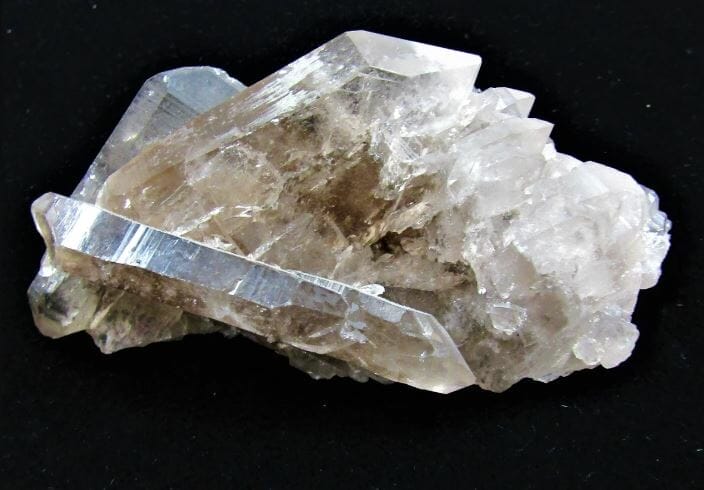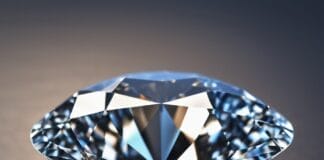Imagine your watch ticking with perfect precision or your smartphone’s touch screen responding seamlessly to your fingers. Behind these wonders lies a fascinating phenomenon called piezoelectricity, predominantly harnessed through quartz crystals.
This blog post explores the influence of piezoelectricity in quartz crystals, highlighting its significance in everyday technology. From timekeeping devices to sensors, and frequency control in electronic circuits, piezoelectricity plays a crucial role in our tech-driven world. At the atomic level, the arrangement of atoms within the crystal lattice is key.
Sound waves generated through piezoelectric materials, such as lead zirconate titanate, are used in various applications. Discovered by Pierre Curie, piezoelectricity remains a cornerstone of modern technology.
What is Piezoelectricity?
At its core, piezoelectricity is the ability of certain materials to generate an electric charge in response to applied mechanical stress. It’s like magic, but with a scientific explanation.

Imagine pressing on a sponge and generating electricity – that’s piezoelectricity in action. When you apply pressure to a piezoelectric material, such as quartz, the internal structure deforms, causing an electrical charge to build up on the surface. This is often referred to as the inverse piezoelectric effect.
This remarkable property isn’t exclusive to quartz. Other materials, including certain ceramics like PZT (lead zirconate titanate) and polymers, also exhibit piezoelectric behavior. However, quartz crystals stand out due to their efficiency and stability. They can convert mechanical energy into electrical energy with minimal loss, making them ideal for many practical applications, such as in a microphone or a cigarette lighter. The electric field applied to the crystal is what enables these devices to function so effectively.
Interestingly, piezoelectricity was first discovered in 1880 by the brothers Jacques and Pierre Curie, who observed the effect in natural crystal formations. This discovery has since paved the way for numerous innovations, proving that even the simplest materials can hold incredible potential.
Properties of Quartz Crystals
Quartz crystals possess unique properties that make them highly suitable for piezoelectric applications. Firstly, they are naturally abundant. Quartz is the second most abundant mineral in the Earth’s crust, ensuring a steady supply for technological needs.
Secondly, quartz crystals are incredibly stable. They can maintain their piezoelectric properties over time, resisting degradation even under constant use. This stability is essential for applications where consistent performance is crucial, such as in timekeeping devices like quartz clocks.
Lastly, quartz crystals are remarkably efficient at converting mechanical pressure into electrical energy. This efficiency ensures that even small amounts of pressure can generate a substantial electrical charge, making quartz a go-to material for various piezoelectric applications. Additionally, barium titanate used in electronic devices also exhibits excellent piezoelectric properties, offering alternative materials for specialized applications.
Applications of Piezoelectricity in Quartz Crystals
The applications of piezoelectricity in quartz crystals are vast and varied, leveraging their unique properties to revolutionize numerous technological fields. From precision timekeeping in watches to generating high-frequency signals in communication devices, quartz crystals play an indispensable role in modern electronics.
Timekeeping Devices
One of the most common applications of piezoelectricity in quartz crystals is in timekeeping devices. Quartz watches and clocks use the regular vibrations of the crystal to keep accurate time. When an electric current is applied to a quartz crystal, it vibrates at a precise frequency. These vibrations produce a voltage that is counted and converted into time measurements, ensuring unparalleled accuracy.
Frequency Control in Electronic Circuits
In electronic circuits, quartz crystals are used as oscillators to control frequencies. These oscillators provide stable clock signals essential for the operation of microprocessors, radios, and other electronic devices. The reliability and precision of quartz crystals ensure that electronic devices function smoothly and efficiently.
Sensors in Various Industries
Piezoelectric quartz crystals are also employed in a wide range of sensors. Pressure sensors, accelerometers, and even medical ultrasound devices rely on the piezoelectric properties of quartz. When subjected to pressure or vibration, quartz crystals produce a voltage that can be measured and analyzed. This makes them invaluable in industries ranging from automotive to healthcare.
Emerging Applications
Beyond traditional uses, piezoelectric quartz crystals are finding their way into emerging technologies. One exciting area is energy harvesting. Researchers are exploring ways to harness the vibrations and movements in our environment to generate electricity using piezoelectric materials, including quartz.
Jacques Curie first discovered these properties, and now, when an applied voltage is used, these crystals could lead to self-powered devices and sensors, reducing the need for batteries and external power sources.
The Future of Piezoelectric Quartz Crystals
The future for piezoelectric quartz crystals looks promising, with ongoing research and development paving the way for new and improved applications.

Miniaturization, for instance, is a key focus. Smaller, more efficient piezoelectric devices could revolutionize wearable technology, implantable medical devices, and more. Direct piezoelectric effect and piezoelectric ceramic advancements are also contributing to these innovations.
Additionally, advancements in materials science are enhancing the efficiency and functionality of piezoelectric quartz crystals. Researchers are experimenting with single crystal composite materials and novel fabrication techniques to push the boundaries of what piezoelectricity can achieve.
Quartz-based Piezoelectric Materials
Quartz-based piezoelectric materials offer high stability, precise frequency control, and low aging rates, making them ideal for precision applications. Their robustness ensures longevity and reliability, critical in demanding environments like medical and automotive sectors.
The natural abundance and low cost of quartz further enhance its appeal in commercial and industrial uses. Well-known piezoelectric pickups are used to produce electrical pulses that is used in various applications. Sensors are used in systems that utilize these materials.
Quartz-based piezoelectric elements are also used to drive critical components. However, optimizing these materials for emerging technologies remains challenging. Miniaturizing components for wearable and implantable medical devices presents engineering difficulties.
Integrating quartz-based piezoelectric elements with other systems requires precise calibration to maintain performance and efficiency. Ongoing research and development uses a combination of techniques and must be used to fully unlock the potential of quartz-based piezoelectric materials in future technologies.
Where Do Piezoelectric Crystals Come From?
Piezoelectric crystals are naturally occurring minerals that can be found in various geological environments. Quartz, one of the most common piezoelectric minerals, is abundant in Earth’s crust and is often mined from quartz veins and pegmatites, which are types of igneous rock formations.
The crystal is rotated to optimize its properties. Other naturally occurring piezoelectric minerals, such as tourmaline and Rochelle salt, are also sourced from specific geological settings. Beyond natural sources, synthetic piezoelectric crystals are manufactured in controlled laboratory environments to meet the high demand for industrial applications.
These synthetic crystals are engineered to possess optimized piezoelectric properties and are often used in precision devices where consistent performance is crucial. The regular crystals used in these applications are placed between two metal plates to generate piezoelectric power.
The sourcing and manufacturing of these materials to rival the performance of natural crystals involve processes aimed at ensuring purity and quality, crucial for their effectiveness in various technological applications. These piezoelectric materials are commonly used in electronic devices.
Does A Piezo Element Ever Run Out Of Charge?
Despite their ability to generate electrical charge, piezo elements do not “run out of charge” in the traditional sense. Instead, they rely on mechanical stress to produce electricity via the piezoelectric effect.
Piezoelectricity works when a mechanical force is applied to the piezo material, such as pressure or vibration, causing a displacement of the internal charges within the crystal structure and generating an electric voltage. This process, known as piezoelectric technology, is reversible and can be repeated many times without the material depleting its ability to produce charge.
However, over long periods and under extreme conditions, piezo elements using crystals can experience wear and fatigue, potentially leading to a reduction in their efficiency and effectiveness. Proper usage and maintenance are essential to ensure the longevity and optimal performance of piezo elements in various applications, including scenarios where voltage applied to the crystal is a factor.
Conclusion
In conclusion, piezoelectricity in quartz crystals is a powerful force driving innovation in modern technology. From keeping our watches ticking to enabling precise sensors, the applications are vast and varied. The natural abundance, stability, and efficiency of quartz make it an ideal material for harnessing piezoelectric properties.
As we look to the future, the potential for piezoelectric quartz crystals to drive even more innovations is exciting. Whether through miniaturization or energy harvesting, this technology will continue to shape our world. For tech enthusiasts eager to explore the magic of piezoelectricity further, there’s no better time to dive in and discover the wonders of quartz.
If you’re interested in learning more about piezoelectricity and its applications, consider exploring further resources or reaching out to experts in the field. The world of piezoelectricity in quartz crystals is vast, and there’s always more to discover.























































